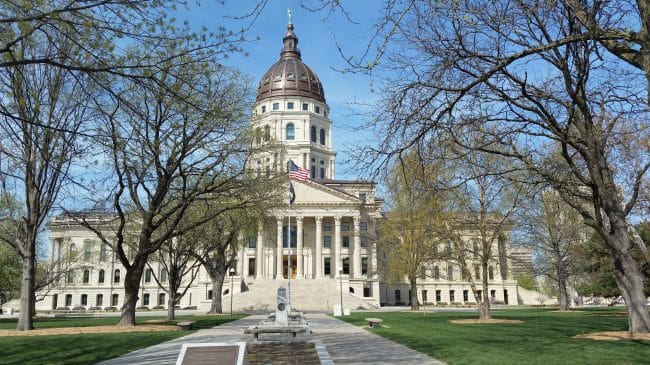Kansas Gov. Laura Kelly’s budget proposal includes an element seeking to reduce Kansas’ annual pension payments by reamortizing pension debt payments out further into the future. While this might lower pension contributions in the near term, extending the pension debt further into the future would in effect cost the state an additional $7.4 billion over the next 30 years. Worse, the plan’s funded ratio would remain below 80 percent until 2037 (11 years longer than currently projected) and wouldn’t reach 100 percent until 2047 (an additional 14 years).
This is unfortunate, because the Kansas Public Employees Retirement System (KPERS) has shown some signs of recovery from its recession lows, improving from 56 percent funded in 2012 to 68 percent in 2017. While this is notable and commendable progress, the system is still far from stable and is still well below its pre-recession peak of being 88.6 percent funded in 2000. Likewise, the current funded ratio is well below the 100 percent target recommended by the American Academy of Actuaries’ Pension Practice Council and the Government Finance Officers Association.
From 2012 to 2017, the unfunded actuarial liability fell by $1.34 billion, primarily due to strong investment returns exceeding the system’s current assumptions. This progress is good but also shouldn’t be met with complacency, as the continuance of these gains is far from guaranteed.
Currently, the plan has an assumed rate of return of 7.75 percent compared to a national average of 7.4 percent for similar public plans, suggesting that KPERS’ current return assumptions may be overly optimistic in regards to national norms and the emerging “new normal” consensus among major investment managers.
KPERS’ history of asset allocation appears to show the plan taking on more risk to achieve higher returns, likely driven by the need to keep up with its increasingly optimistic return assumption. The fund currently allocates less than 12 percent of its assets to risk-free fixed-income and has plans to increase allocations in real estate and alternative investments, which can be less transparent and are often associated with more risk.
KPERS’ discount rate of 7.75 percent may also be problematic. Unlike the assumed rate of return— also 7.75 percent (see more here)—the discount rate helps determine the present value of promised pension liabilities. A 2018 Milliman Public Pension Study of the 100 largest U.S. public pension plans found average discount rates fell from 7.5 percent in 2017 to 7.25 percent in 2018. Furthermore, KPERS’ current discount rate is also misaligned with the implied risk premium of the national average discount rate as determined by federal and/or municipal bond yields.
Despite recent investment gains, KPERS has struggled to return to pre-recession norms. The plan’s delicate position is far too fragile to risk delaying the current path to full funding. The assumed rate of return and discount rate are arguably too high, which would indicate the fund is substantially underestimating the current unfunded actuarial liability and thus, the true costs of providing retirement benefits.
By extending the length of time to pay off the state’s pension debts, Gov. Kelly’s proposed reamortization of KPERS unfunded pension liabilities would further exacerbate the fiscal impact of these overly optimistic assumptions in the future.
Additionally, economic analysts are becoming increasingly concerned that recession risks are rising. If anything, KPERS pension managers and state policymakers should be more aggressive with funding policy at this time, not less. Public workers in Kansas are depending on elected leaders to get this right, so it’s time to work harder towards ensuring that pension promises made are promises kept.
Stay in Touch with Our Pension Experts
Reason Foundation’s Pension Integrity Project has helped policymakers in states like Arizona, Colorado, Michigan, and Montana implement substantive pension reforms. Our monthly newsletter highlights the latest actuarial analysis and policy insights from our team.

